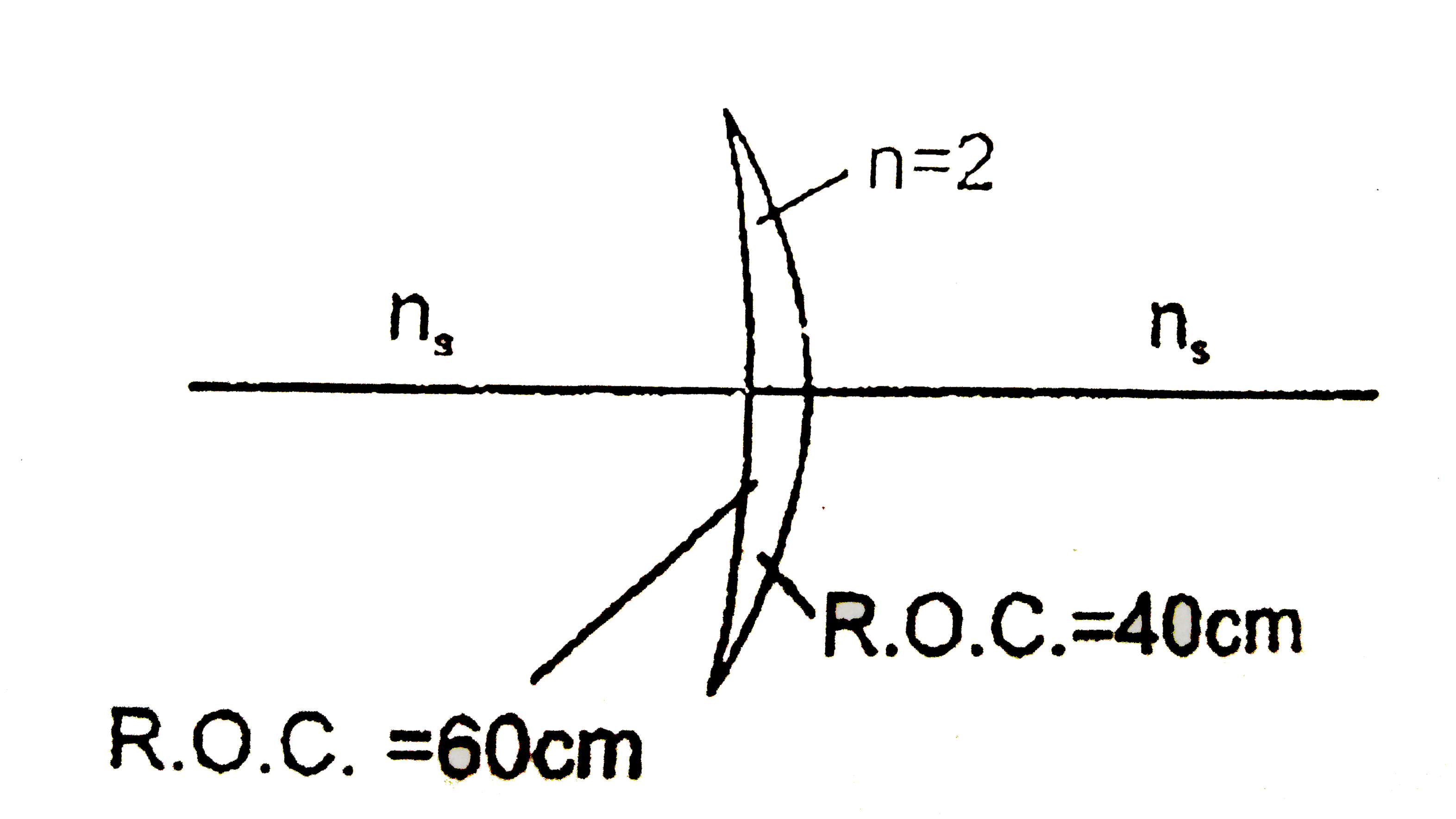Consider two palne convex lanse of same radius of curvature and refrective index n1 and n2 respectively. Now consider two cases :
_PHY_E01_001_Q01.png)
Case - I : When n1=n2=n, then equivalent focal length of length is f0
Case - II : When n1=n,n2=n+Δn, then equilivant focal length of lens is f=f0+Δf0
Then correct options are :
If Δnn<0 then Δff>0
∣∣∣Δff∣∣∣<∣∣∣Δnn∣∣∣
The relation between Δff and ∣∣∣Δnn∣∣∣ remains unchanged if both the convex surfaces are replaced by concave surfaces of the same radius of curvature.
For n=1.5,Δn=10–3 and f=20cm, the value of |Δf| will be 0.02 cm (round off to 2nd decimal place).
The correct Answer is:A, C, D
Step by step video, text & image solution for Consider two palne convex lanse of same radius of curvature and refrective index n_(1) and n_(2) respectively. Now consider two cases : Case - I : When n_(1) = n_(2)=n, then equivalent focal length of length is f_(0) Case - II : When n_(1) = n, n_(2) = n+ Delta n, then equilivant focal length of lens is f = f_(0) + Delta f_(0) Then correct options are : by Physics experts to help you in doubts & scoring excellent marks in Class 12 exams.
Topper's Solved these Questions
Similar Questions
Knowledge Check
- Question 1 - Select One
A biconvex lens made of material with refractive index n2. The radii of curvatures of its left surface and right surface are R1 and R2. The media on its left and right have refreactive indices n1 and n3 respectively. The first and second focal lengths of the lens are respectively f1 and f2.
The ratio, f1/f2, of the two focal lengths is equal toAn1/n3B(n1−1)/(n3−1)C(n1+1)/(n3+1)D(n2−n3)/(n2−n1) - Question 2 - Select One
A biconvex lens made of material with refractive index n2. The radii of curvatures of its left surface and right surface are R1 and R2. The media on its left and right have refreactive indices n1 and n3 respectively. The first and second focal lengths of the lens are respectively f1 and f2.
Assume that n1=n3. Which of the following statements is not correct ?Af1=f2.Bf3 is inversely proportional to n3−1.CIf R1 and R2 are unequal, the focal length would depend on the direction in which light travels through the lens.Df1 may be negative if n1>n2. - Question 3 - Select One
A biconvex lens made of material with refractive index n2. The radii of curvatures of its left surface and right surface are R1 and R2. The media on its left and right have refreactive indices n1 and n3 respectively. The first and second focal lengths of the lens are respectively f1 and f2.
Assume that R1=R2,n1≠n3. The ratio, f1/f2, of the two focal lengths is equal toA1Bn1/n3Cn3/n1D(n3−1)/(n1−1)
If f:N→N is defined by f(n)=n−(−1)n, then
View SolutionAn equiconvex lens of refractive index n, focal length/and radius of curvature R is immersed in a liquid medium of refractive index nm. For (?) nm>n, and (ii) nm<n, draw the ray diagrams in the two cases when a beam of light coming parallel to the principal axis is incident on the lens. Also find the focal length of the lens in terms of the original focal length and the refractive indices of the lens and that of the medium.
View Solutionf(1)=1,n≥1 f(n+1)=2f(n)+1 then f(n)=
View SolutionIf f(1) = 1 and f(n + 1) = 2 f(n) + 1, if n ≥ 1, then f(n) is.
View SolutionA convex lens of focal length f produces an image 1/n times the size of the object. The distance of the object from the lens is
View Solution


